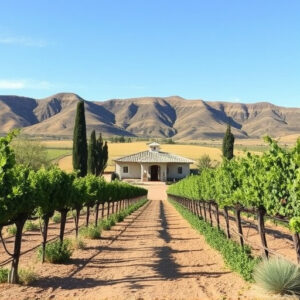Sonoita, Arizona's wine region boasts diverse microclimates and unique soil compositions that shape varied grape flavors. From cool-climate Pinot Noir to warmer Zinfandel, each winery offers distinct terroirs and wine profiles, attracting enthusiasts exploring Arizona's acclaimed wineries.
Explore the enchanting world of microclimate wines in the neighboring Sonoita region vineyards, Arizona. This article delves into the unique terroirs that shape each vineyard, from soil composition to bottle-ready flavor profiles. We compare and contrast these hidden geographies, revealing how they influence wine styles and regional identities. Discover the art of aging in diverse microclimates and unlock the secrets behind the captivating wines produced in this vibrant Arizona winery scene.
- Exploring Sonoita's Diverse Microclimates
- Vineyard Comparisons: Soil to Bottle
- Tasting Notes: Style and Regional Influence
- The Art of Aging in Different Terroirs
- Unlocking Wine's Hidden Geographies
Exploring Sonoita's Diverse Microclimates
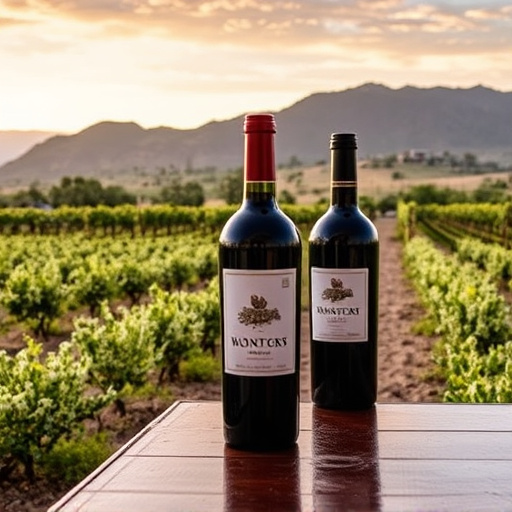
Sonoita, Arizona, is a captivating wine region renowned for its diverse microclimates, each offering unique characteristics that shape the flavors of the grapes grown there. This remarkable diversity allows nearby vineyards to produce an array of distinctive wines, catering to varied palates. The region’s microclimates range from cooler areas influenced by mountain ranges, providing a more temperate environment suitable for lighter-bodied red varieties like Pinot Noir and Tempranillo, to warmer zones near the Mexico border, ideal for full-bodied reds such as Syrah and Zinfandel.
This variation in temperature and sunlight exposure throughout Sonoita’s vineyards results in wines that exhibit diverse flavor profiles and aromas. The cooler microclimates produce grapes with brighter acidity and more delicate flavors, while the warmer regions contribute to richer, fruitier wines. Exploring these microclimates offers wine enthusiasts a chance to uncover the unique terroirs of Sonoita, fostering a deeper appreciation for the region’s ability to craft an extensive range of exceptional wines from neighboring vineyards.
Vineyard Comparisons: Soil to Bottle
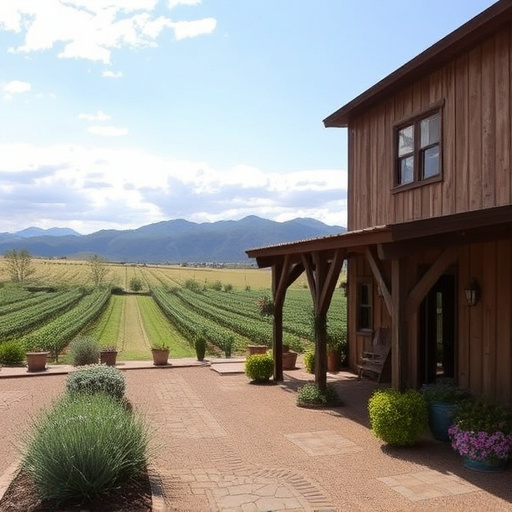
When comparing microclimate wines from neighboring Sonoita region vineyards, one cannot overlook the significant role soil plays in shaping the final product. Each vineyard’s unique soil composition contributes to the distinct flavors and aromas found in the bottles. For instance, some wineries in Sonoita, AZ, benefit from well-draining sandy soils that promote vigorous grape growth and allow for better heat dissipation, often resulting in fuller-bodied reds with crisp acidity. In contrast, other vineyards may have deeper, richer loam soils that provide excellent nutrient retention, leading to more nuanced and elegant flavors in their wines.
The journey from soil to bottle is a delicate one, where winemakers must carefully balance the natural characteristics of their land with their own techniques. Some producers might choose organic or biodynamic practices, letting the soil’s natural biodiversity flourish, while others may employ traditional methods or innovative technologies to enhance specific aspects of the wine. These variations in vineyard management practices further contribute to the diverse range of microclimate wines available from Sonoita region wineries, offering wine enthusiasts a fascinating exploration of terroir and its impact on flavor profiles.
Tasting Notes: Style and Regional Influence
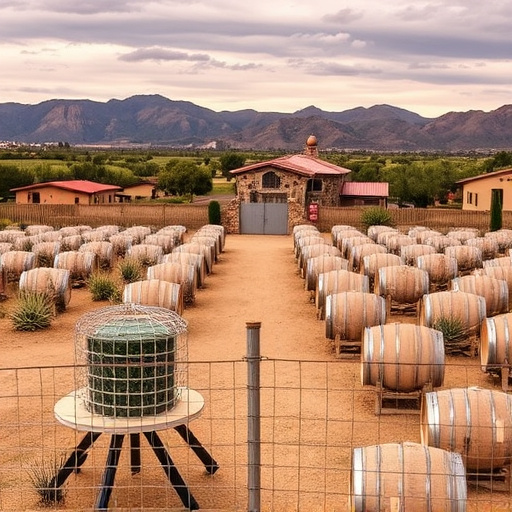
When comparing microclimate wines from neighboring Sonoita region vineyards, one cannot help but notice the distinct styles and regional influences that shape each unique offering. The varying elevations, soil types, and exposure to sun and wind create diverse microclimates, resulting in wines that range from crisp and bright to rich and full-bodied. Tasters often detect notes of citrus and herbaceity in lighter varieties, reflecting the region’s Mediterranean influence. These refreshing whites, typically made from grapes like Sauvignon Blanc and Viognier, offer a taste of the azure sky and sun-kissed hillsides that characterize the Sonoita wine country, attracting visitors to nearby wineries in search of these distinctive flavors.
In contrast, red wines from the same area often showcase earthy tones, dark fruit, and subtle spice, attributes that underscore the region’s warmer, drier climate. Varietals such as Syrah, Grenache, and Mourvèdre thrive here, producing robust reds that bear the distinct character of Sonoita. These wines invite closer inspection, inviting wine enthusiasts to explore the intricate relationship between terroir and taste, all while enjoying the picturesque landscapes that make this corner of Arizona a true gem for viticulture aficionados.
The Art of Aging in Different Terroirs
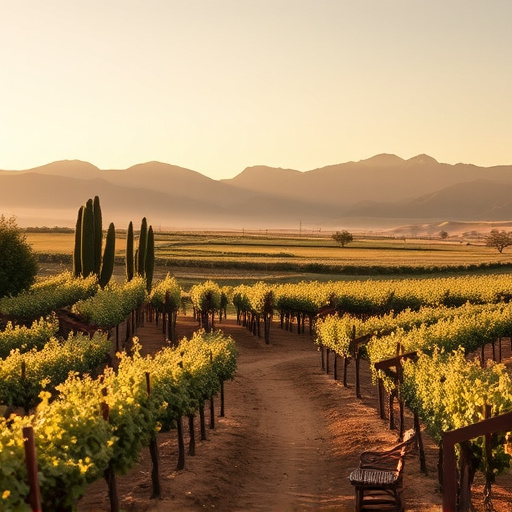
The art of aging wine is a delicate dance, heavily influenced by the unique characteristics of each vineyard’s terroir. In neighboring Sonoita region vineyards, this becomes a fascinating study in contrast. Soils vary from sandy and well-draining to richer, more fertile grounds, each offering distinct microclimates that impact the wines’ development over time.
Winemakers in these areas must carefully navigate these variations, as aging can significantly alter a wine’s flavor profile. Softer, cooler microclimates tend to slow down fermentation, allowing for complex flavors and aromas to develop gradually. In contrast, warmer regions encourage faster aging, often resulting in more fruity, vibrant wines. Understanding these nuances is what makes visiting Sonoita region wineries a captivating experience for wine enthusiasts, as each vineyard’s terroir tells a unique story within its bottles.
Unlocking Wine's Hidden Geographies
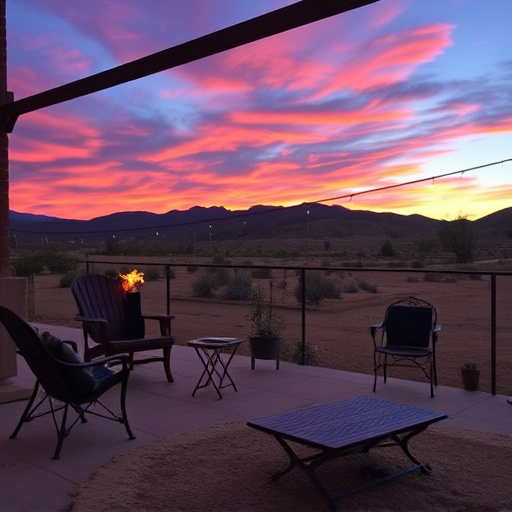
The wine world is a vast and intricate landscape, with each region offering unique characteristics that shape the flavors and aromas of the grapes they cultivate. In the case of the Sonoita region in Arizona, USA, a fascinating phenomenon occurs where neighboring vineyards produce wines with distinct microclimate influences. This concept of microclimate plays a pivotal role in unlocking the hidden geographies of wine, revealing how subtle variations in temperature, sunlight exposure, and wind patterns can create diverse terroirs—the physical and biological environment in which grapes are grown.
Each winery in Sonoita sits within its own unique microclimate pocket, resulting in wines that reflect the specific conditions of their vineyard. For instance, some vineyards may experience cooler temperatures due to elevation changes, leading to slower ripening grapes with higher acidity levels. Conversely, lower-lying areas might bask in warmer sun, contributing to ripe, fruity wines with richer body. These subtle differences are what make wine tastings in Sonoita a delightful adventure, offering a glimpse into the diverse and nuanced character of the region’s viticulture.
The Sonoita region of Arizona stands as a testament to the profound impact microclimates have on winemaking. By exploring the diverse terroirs and comparing vineyard practices, we uncover unique wine styles that reflect their specific origins. From soil composition to regional influences and aging techniques, each winery in Sonoita tells a story woven into the very fabric of their wines. Whether you’re a connoisseur or curious beginner, delving into these microclimate wines invites you to appreciate the intricate dance between place and flavor, all while enjoying the vibrant, bustling landscape that is Arizona’s wine country.
